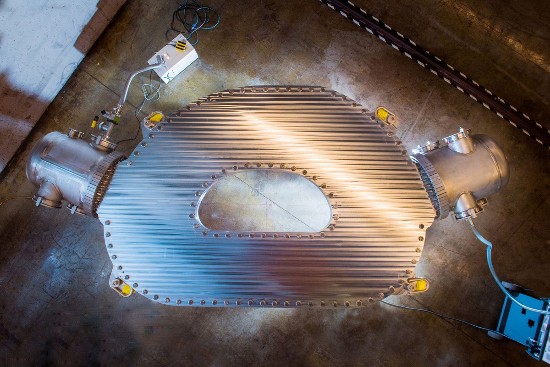Commonwealth Fusion Systems (CFS) is a Massachusetts-based company spun out of the Massachusetts Institute of Technology (MIT). It is the creator of one in a number of promising technological advances that are moving us closer to the Holy Grail of unlimited energy by harnessing a process here on Earth that only occurs in the core of stars.
The Sun and other stars are enormous fusion reactors using their immense gravity to create compressive forces so great it forces light atomic particles like hydrogen to fuse together releasing vast amounts of energy.
How dense does the Sun’s internal environment have to be to produce a fusion reaction? Measured in grams per cubic centimetre, that number is 160. How does that measure against atmospheric pressure at sea level? An air density of one atmosphere when measured with an ambient temperature of 15 Celsius (59 Fahrenheit) translates to a weight pressure equivalent to 0.002695 pounds per cubic centimetre. If that doesn’t sound like a lot of pressure, you are right. It’s pretty tame stuff and no atoms swirling around under those conditions would fuse together despite what cold fusion advocates espouse even if we were to apply an external heat source to raise the temperature by a factor of one thousand or more. The difference-maker is gravity and we cannot create that physically here on Earth without applying all manners of technology.
In the current race to build a commercial equivalent to the Sun, companies and universities on both coasts of the United States, and in Canada, China, France, Germany, Japan, and the United Kingdom are in a horse race using a variety of novel technological solutions including:
- Tokamaks, powerful magnetic fields to contain hot plasma under very high atmospheric pressures,
- Stellarators that feature complex coiled configurations of tubes that serve to confine hot plasmas,
- Lasers that use pulsed energy beams to initiate sustained fusion,
- Acoustically-driven magnetized fusion that uses hundreds of synchronized pneumatic pistons to create pressures within a confined sphere to superheat plasma.
In the Sun’s high-density core, temperatures reach 15 million Celsius (27 million Fahrenheit). Hydrogen and helium, the two lightest atoms, become a plasma with the end result, a chain reaction that sees hydrogen fuse into deuterium, and helium to beryllium with excess amounts of energy released at every stage. Fusion in the Sun continuously combines lighter atomic elements with each other until the star’s engine produces iron. To create elements heavier than iron, the Sun would need an additional energy source of input as would be generated if the star were to go supernova. The energy produced at every stage of the fusion chain reaction is measured in mega-electron volts or MeV. Each MeV equals 1,000,000 electron volts (eV).
The technology that CFS has developed is a high-temperature superconducting (HTS) magnet, seen in the image above. In the latest test, the HTS was able to create a sustained magnetic field of more than 20 Tesla (a measure equal to one volt per second per square metre), or enough force to confine and compress a plasma field within a tokamak to create a net energy yield from a controlled fusion chain reaction. The tokamak being used is the SPARC which was developed at MIT. Smaller than the CERN ITER, the experimental fusion reactor project that has involved a number of countries and has endured endless delays, SPARC with HTS magnets is on track to be completed by 2025.
Achieving net energy output greater than energy input is the goal of every organization playing in the fusion reactor game. In a September 2021 news release, Bob Mumgaard, CEO of CFS was quoted stating, “The world needs a fundamentally new technology that will support efforts to decarbonize on a timeline that can mitigate climate change. This test of our magnet proves we have that technology, and we’re on our way to producing clean, limitless energy for the entire world.”
If successful, CFS will be one of two front runners in creating the first viable commercial fusion reactors. The other in this horse race is General Fusion, the Canadian company that is currently building a demonstration project near Oxford, in the United Kingdom.
The SPARC will be housed in a commercial fusion power plant called ARC. Mumgaard claims that CFS has the lead now with “the fastest path to commercialization of affordable fusion energy” in the world.









